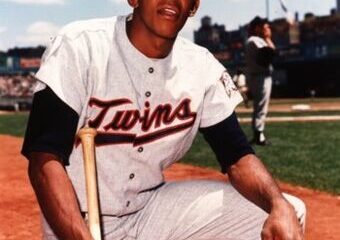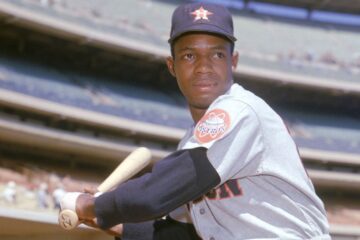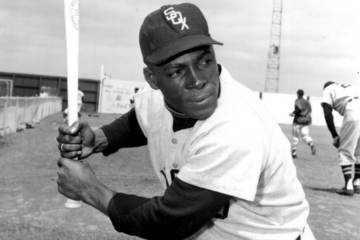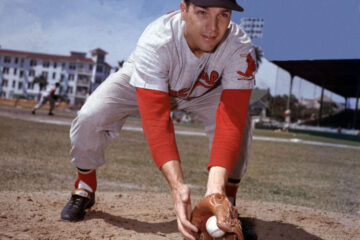The Hall of Fame Index: Who is the most dominant right handed pitcher of all-time?
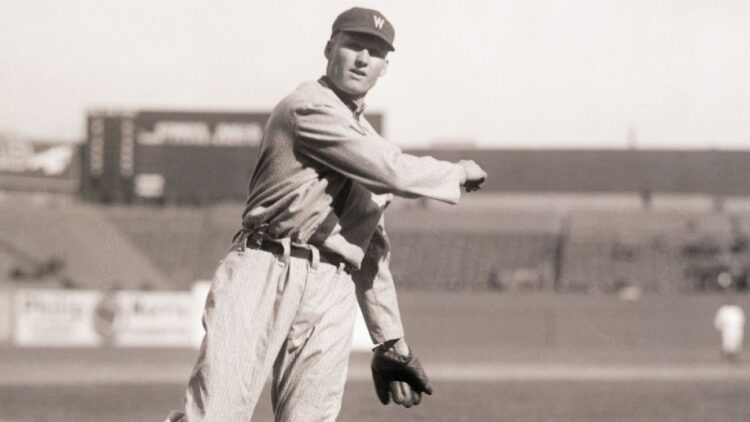
When we start talking about deciding who the best right handed pitcher of all-time we first have to precisely define our terms. I start by striking the term best from the record. It is impossible to compare pitchers from very different times and determine who was the best or greatest. We really are looking for the most dominant pitcher. It might seem like the same thing, but one presupposes that the game hasn’t changed or that competition has remained level over time. We know this isn’t the case, so we go with this reality.
I have used a lot of numbers in these debates because the more information we include the more informed our choice will be. I had the privilege of arguing with someone on Facebook about two current pitchers. The idea was that the pitcher that had the most wins was automatically the best pitcher. This notion is ridiculous. If we were going to go there then we would simply say that Cy Young was the greatest pitcher of all time because he won the most games. Obviously, most of us are more sophisticated than that.
However, we cannot deny the subtle effect that wins has on our collective psyche. The award for the best pitcher in the league is called the Cy Young Award. It isn’t the Walter Johnson award or the Christy Mathewson award. The wins rule was set up in a world where pitchers completed every game and got to hit. This year we might not see any complete games and we will not see any pitchers hit.
Career Value
| BWAR | FWAR | WS/5 | Total | |
| Cy Young | 163.8 | 132.3 | 126.8 | 422.9 |
| Walter Johnson | 164.5 | 126.6 | 112.0 | 403.1 |
| Roger Clemens | 139.2 | 134.4 | 87.4 | 361.0 |
| Greg Maddux | 106.6 | 118.5 | 79.6 | 304.7 |
| Christy Mathewson | 106.0 | 96.5 | 85.2 | 287.7 |
| Tom Seaver | 109.9 | 96.2 | 77.6 | 283.7 |
The index is just one component of the debate. In terms of career value, a lot of that is dependent on longevity. We are talking about the very best of the best (with a tip of the cap to Pete Alexander fans) and guys that pitched for a long time. However, we are talking about the difference between pitching for fifteen years and twenty seasons.
It doesn’t answer the question of who was the most dominant. Dominance and durability are two different traits. This is why we look at peak value in addition to career value. We combine these together to come up with the index. That gives us a broader idea, but the idea behind the Hall of Fame Index Part II was that we needed more than just the index to make these choices.
Peak Value
| BWAR | FWAR | WS/5 | Total | Index | |
| Young | 99.3 | 70.7 | 71.6 | 241.6 | 664.5 |
| Johnson | 108.1 | 78.1 | 70.2 | 256.4 | 659.5 |
| Clemens | 70.6 | 65.4 | 42.4 | 178.4 | 539.4 |
| Mathewson | 78.4 | 70.3 | 65.0 | 213.7 | 501.1 |
| Maddux | 69.6 | 72.2 | 48.6 | 190.4 | 495.1 |
| Seaver | 71.2 | 66.0 | 50.0 | 187.2 | 470.9 |
Even if we just break it down by peak value (ten year period) we see a problem with the difference between volume and quality. The three older pitchers pitched in eras with four man rotations and frequent complete games. 300+ inning seasons were the norm and not the not the exception. Modern pitchers only get 200 innings if they are really durable because of five man rotations and the proliferation of the bullpen.
In the book, this was broken down by era for that reason. The best way to go about this is to look at the three pitchers from each relative era in comparison with each other. If we do that then we Johnson on top for the first group and Maddux for the second group. Yet, it’s hard to make those calls without looking at the overall pitching numbers. In the book, I didn’t also break down the numbers by their ten year peaks, but I will also do that here for comparison.
Pitching Numbers
| Wins | PCT | ERA+ | WaaPCT | Diff | |
| Johnson | 417 | .599 | 147 | .620 | -.021 |
| Clemens | 354 | .658 | 143 | .632 | .026 |
| Young | 511 | .619 | 138 | .612 | .007 |
| Mathewson | 373 | .665 | 136 | .598 | .067 |
| Maddux | 355 | .610 | 132 | .588 | .022 |
| Seaver | 311 | .603 | 127 | .599 | .004 |
It seems obvious, but it should be pointed out clearly for the lovers of wins and winning percentage. Johnson has the best ERA+ in the group and the lowest winning percentage. The conventional wisdom is that pitchers that don’t win didn’t know how to win. So, we end up revering a pitcher like Mathewson to the point where we leave out a Pete Alexander. The only shred of evidence that throws Mathewson over Alexander is winning percentage. The irony of my omission is not lost on me.
If we converted their records into neutral wins and losses then our collective perception of them changes drastically, This is why we include WaaPCT in the first place. It distills the affects of run support, bullpen support, and fielding support and considers each pitcher on their own merits. Even without that, ERA+ tells us a great deal. Still, most people want to know what each pitcher did when they were at their very best. So, let’s include the ten year numbers for the statistics above.
| Wins | PCT | ERA+ | WaaPCT | DIFF | |
| Johnson | 265 | .646 | 191 | .668 | -024 |
| Maddux | 182 | .689 | 183 | .662 | .027 |
| Clemens | 155 | .633 | 161 | .657 | -024 |
| Mathewson | 273 | .720 | 159 | .625 | .095 |
| Young | 283 | .654 | 150 | .638 | .016 |
| Seaver | 182 | .630 | 144 | .635 | -.005 |
Again, Johnson won fewer games than he should have, but he wasn’t alone there. Clemens and Seaver joined in him in that regard, but Seaver may have lost only one or two wins over the course of a ten year period. Simply put, it should be obvious that wins and losses shouldn’t matter when judging pitchers. A pitcher’s job is to prevent the other team from scoring runs. We have considerable disagreement over their ability to do that on their own, but even in that world grading pitchers on that makes a lot more sense than grading pitchers on wins.
We could break down other numbers (and people have suggested it in their comments) but the issue with looking at numbers like strikeouts and walks is that each era has its norms and we have to look at numbers in context. If we look at each era on its own then we can certainly do that, but we cannot compare modern pitchers in terms of strikeouts with pitchers in the Dead Ball Era.
In the debate over left-handed starters we also looked at how often they led the league in important statistical categories. We included wins, ERA, strikeouts, complete games, and shutouts. We will do that here as well just to be consistent. Again, we have to highlight the differences in the importance of complete games and shutouts.
| Wins | ERA | SO | CG | SHO | Tot | |
| Johnson | 6 | 5 | 12 | 6 | 6 | 35 |
| Clemens | 4 | 7 | 5 | 3 | 6 | 25 |
| Mathewson | 4 | 5 | 5 | 2 | 4 | 20 |
| Young | 5 | 2 | 2 | 3 | 7 | 19 |
| Maddux | 3 | 4 | 0 | 3 | 5 | 15 |
| Seaver | 3 | 3 | 5 | 1 | 2 | 14 |
So, maybe it should have been called the Walter Johnson award. While this would seem to close the issue we know things are never quite that simple. People love to throw their weight behind big game pitchers. Some pitchers have more of an opportunity than others to demonstrate their ability to pitch in those big games. Mathewson had more opportunities as a Giant than Johnson did as a Senator. Modern pitchers get more opportunities with multiple playoff rounds. However, we still have to consider the numbers nonetheless.
Playoff Numbers
| Top 10 | Top 5 | CY | Total | |
| Young | 2 | 9 | 6 | 111 |
| Clemens | 2 | 6 | 7 | 106 |
| Johnson | 5 | 4 | 7 | 105 |
| Mathewson | 2 | 5 | 5 | 81 |
| Seaver | 3 | 8 | 3 | 79 |
| Maddux | 1 | 8 | 3 | 73 |
It seems hilarious to suggest that Cy Young would win fewer Cy Young awards than Walter Johnson or Roger Clemens. This is the deep seeded bias of wins. What Young has is more longevity than the other two. He was a top ten pitcher in one more season than Johnson and two more than Clemens. That doesn’t seem like much, but it is one more season. Every pitcher here was a top ten pitcher in more seasons than the ten we profile in their peak.
All of these numbers taken in concert probably create more questions than answers. The numbers would seem to point at more than one answer. A giant part of analysis is choosing which numbers to pay attention to. Obviously, each of us will choose our own. If forced to choose I would probably vote on Johnson, but a vote for Young or Clemens is not totally out of bounds either. As per usual, I love hearing comments, so feel free to leave some here, on Facebook, or on Twitter.


